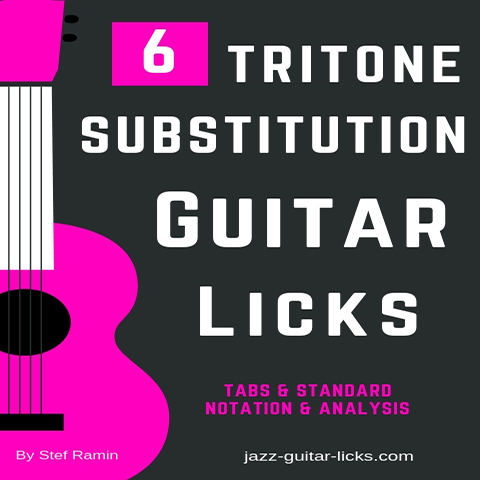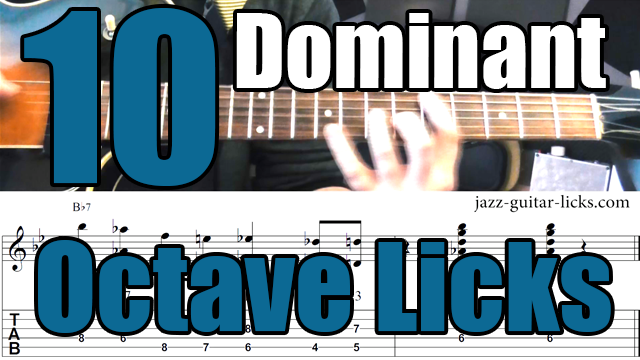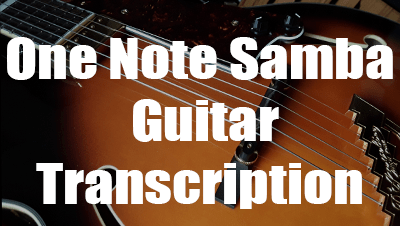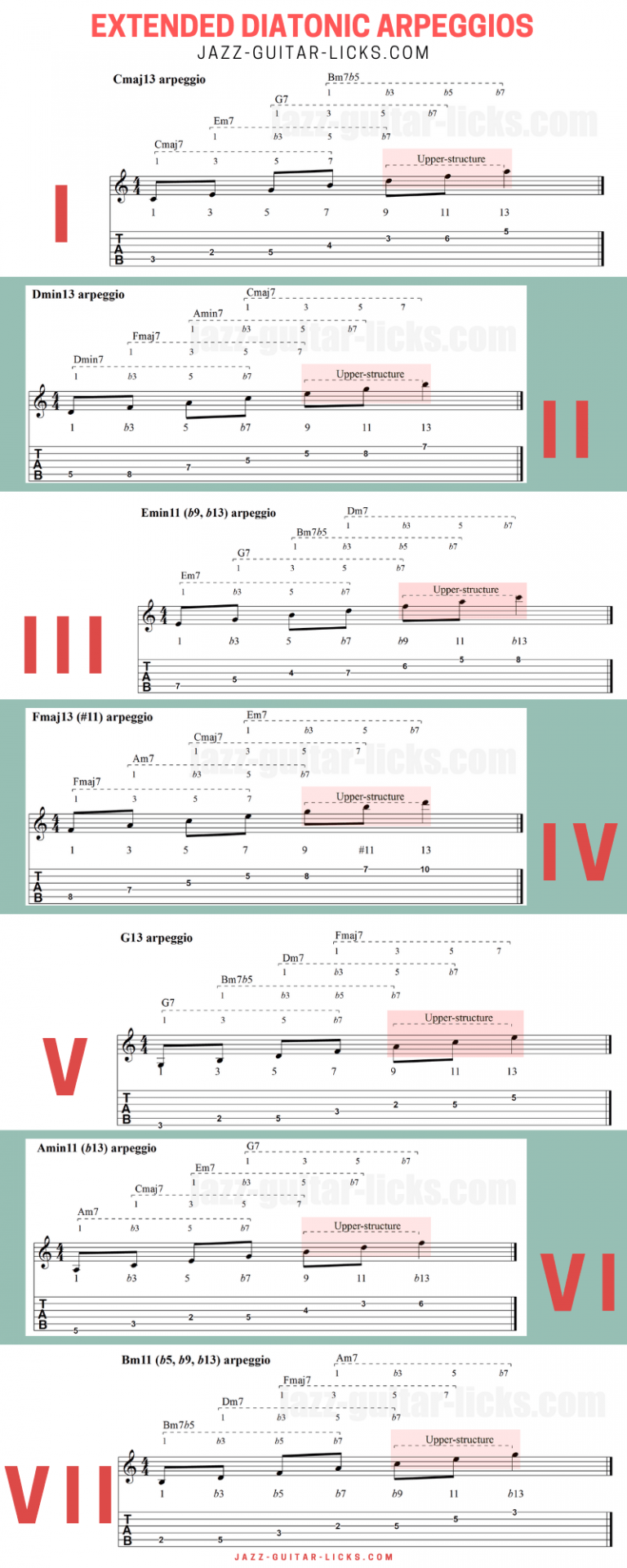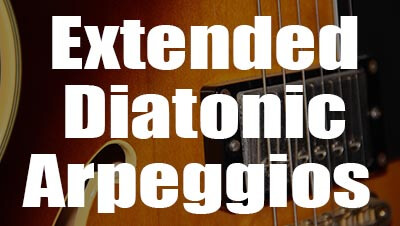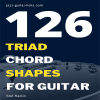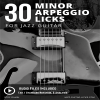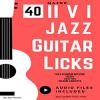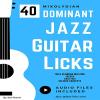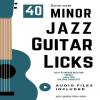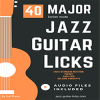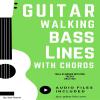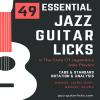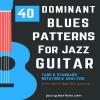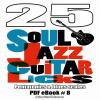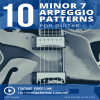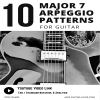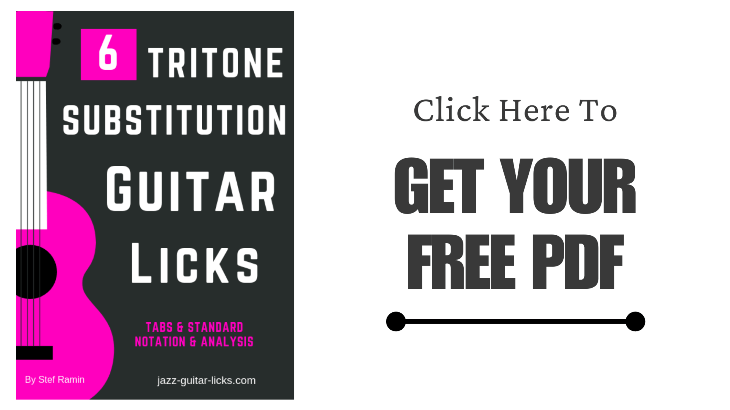Blog - Jazz Guitar Lessons
Welcome,
This blog covers different topics with several useful lessons both for beginners, intermediate and advanced jazz guitar players.
Whether you're looking for tips on playing jazz guitar, this blog surely has the information you crave and will help you expand your music knowledge and technical skills.
Here below many tutorials grouped into several distinct categories:
Jazz Guitar Licks and Transcriptions
Teacher Spotlight - Jazz Guitar Lessons
Cheat Sheets, Methods, Posters, eBooks
The content is regularly updated so don't hesitate to subscribe to the newsletter to receive the latest posts.
-
Solar - Miles Davis - Guitar Chord Melody Lesson and Analysis With Tabs
- By jazz-guitar-licks
- On 2019-03-04
- In Jazz Guitar Lessons
"Solar" is a jazz standard written by Miles Davis in the key of C minor with four tonal centers that are : C minor, F major, Eb major and Db major. Solar contains essential chord progressions as major and minor II V I. This lesson provides a short harmonic analysis and a chord melody arrangement for guitar with tabs, standard notation, chord shapes and audio file.
-
Major 7 Arpeggio - Free Guitar Cheat Sheets
- By jazz-guitar-licks
- On 2019-02-15
- In Guitar Cheat Sheets, Methods, eBooks, Posters
You will find here a free cheet sheat about major 7 arpeggios. This quick guitar lesson provides a brief description of major 7 arpeggios including neck diagrams and formula charts. This document is available in three versions : PDF (for printing), JPEG and PNG for on-line publication.
-
6 Guitar Licks with Tab and Notation - Tritone Substitution
- By jazz-guitar-licks
- On 2019-02-09
- In Guitar Cheat Sheets, Methods, eBooks, Posters
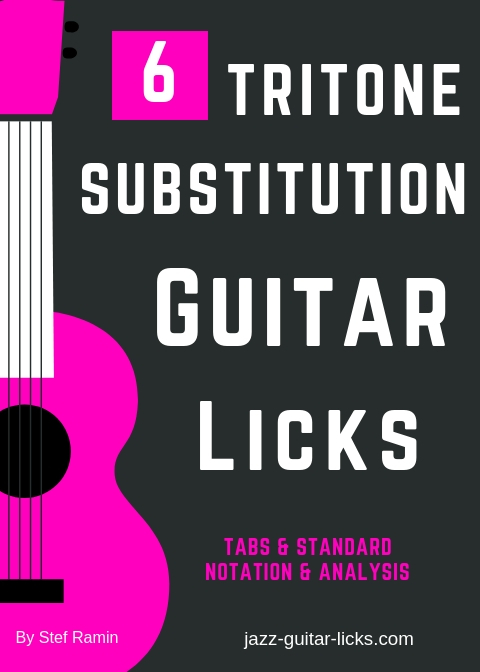 This free printable PDF files contains 6 easy guitar licks with tab, standard notation and anlysis for a better understanding of the tritone substitution.
This free printable PDF files contains 6 easy guitar licks with tab, standard notation and anlysis for a better understanding of the tritone substitution. tritone-substitution-licks-free-pdf-guitar-book-1.pdf (994.69 Ko)
tritone-substitution-licks-free-pdf-guitar-book-1.pdf (994.69 Ko) -
How to Use a Tritone Substitution - 6 Guitar Licks
- By jazz-guitar-licks
- On 2019-02-08
- In Licks & Transcriptions
 What's a Tritone Substitution?
What's a Tritone Substitution?The tritone substitution is one of the most common substitution found in jazz. The basic application of a tritone chord substitution is to take any 7th chord and play another 7th chord that has its root a tritone away from the original. This guitar lesson demonstrates how you can play scales and arpeggios starting from the b5 (a tritone away) of the V7 chord in a II V I chord progression. This way you will highlight altered tones as the b9 and the #11.
-
Octave Playing - Guitar Lesson With Licks and Theory
- By jazz-guitar-licks
- On 2018-12-30
What's Octave Playing?
Octave playing is a big part of jazz guitar language, this technique has been popularized by guitarist Wes Montgomery one of the greatest improvisers and jazz genious of all times.
Theoretically, the principle is quite easy to understand. You just have to play lines using two simultaneaous notes separated by twelve semitones. In practice, it is more difficult because of the fingerings.
Indeed, you have to move two fingers at the same time while keeping the same hand position. This lesson provides guitar diagrams and easy guitar lines for a good mastery of this technique.
-
Locrian Mode Guitar Cheat Sheets - PDF and JPEG Formats
- By jazz-guitar-licks
- On 2018-12-25
Locrian Mode Cheat Sheet For Guitar
The Locrian mode is the seventh mode of the major scale. It has a particular sound because of the b2, b3, b5, b6 and b7. It is probably the least used and the most misunderstood of all of the modes of the major scale. The Locrian mode is usually played over minor seventh flat ninth chords (m7b5).
The Aeolian mode is built with : root (1), minor second (b2), minor third (b3), perfect fourth (4), diminished fifth (b5), minor sixth (b6) and minor seventh (b7).
 locrian-mode-guitar-cheat-sheet.pdf (145.18 Ko)
locrian-mode-guitar-cheat-sheet.pdf (145.18 Ko) -
Mixolydian Mode Guitar Cheat Sheet - PDF and JPEG
- By jazz-guitar-licks
- On 2018-12-25
- In Guitar Cheat Sheets, Methods, eBooks, Posters
Mixolydian Scale Guitar Cheat Sheet - PDF / JPEG
The Mixolydian mode, also called dominant scale is the fifth mode of the major scale. It is a major type scale. This is the mode to know when you want to play over dominant chords (not altered). The Mixolydian mode is widely used in jazz and blues music and one of the most important to master.
The Mixolydian mode is built with : root (1), second (2), third (3), perfect fourth (4), perfect fifth (5), sixth (6) and minor seventh (b7).
 mixolydian-mode-sheet-cheat-for-guitar.pdf (134.74 Ko)
mixolydian-mode-sheet-cheat-for-guitar.pdf (134.74 Ko) -
Dorian Mode Cheat Sheet - Printable PDF and Jpeg File
- By jazz-guitar-licks
- On 2018-12-25
- In Guitar Cheat Sheets, Methods, eBooks, Posters
Printable PDF / JPEG Dorian Mode Cheat Sheet
The Dorian mode is the second of the seven musical modes.It is a minor type scale because of its minor third (b3), often the first choice to play over minor chords and one of the most important scales to know.
The Dorian mode is built with a root (1), a second (2), minor third (b3), fourth (4), perfect fifth (5), sixth (6) and minor seventh (b7).
 dorian-mode-sheet-cheat-for-guitar.pdf (131.29 Ko)
dorian-mode-sheet-cheat-for-guitar.pdf (131.29 Ko) -
Ionian Mode Cheat Sheet For Guitar
- By jazz-guitar-licks
- On 2018-12-25
- In Guitar Cheat Sheets, Methods, eBooks, Posters
Printable PDF / JPEG Ionian Mode Cheat Sheet
The Ionian mode (aka major scale) is the first of the seven musical modes. The other Greek modes are Dorian, Phrygian, Lydian, Mixolydian, Aeolian and Locrian modes. The Ionian mode has exactly the same notes as the major scale and surely the first scale to learn for a beginner musician.
The major scale consists of a root (1), second (2), major third (3), fourth (4), fifth (5), sixth (6) and major seventh (7).
 major-scale-sheet-cheat.pdf (138.61 Ko)
major-scale-sheet-cheat.pdf (138.61 Ko) -
10 Dominant Octave Licks For Guitarist - YouTube Video Lesson
- By jazz-guitar-licks
- On 2018-12-18
- In Licks & Transcriptions
Octave playing technique involves playing the same note on two strings separate by one octave. An octave is 12 semitones higher than the root note. You will find in this blog post a new video from the YouTube Channel, containing 10 dominant octave licks with tabs and standard notation overlayed.
-
Inverted Chords - Music Theory Lesson
- By jazz-guitar-licks
- On 2018-12-16
This music theory lesson provides some easy examples for a better understanding of what are inverted chords.
-
One Note Samba - A.C Jobim - Transcription For Guitar
- By jazz-guitar-licks
- On 2018-12-01
- In Jazz Guitar Lessons
One note samba is a song composed by Antonio Carlos Jobim. The title refers to the main melody of the song, which consists of a serie of identical notes (F and Bb in this arrangement for guitar) with a syncopated rhythm typical of bossa nova and a number of chords typical of this genre.
-
Extended Diatonic Arpeggios - Infographic
- By jazz-guitar-licks
- On 2018-11-27
- In Infographics
Extended areggios, Extensions, Upper-Structure of Chords, Superimposition, Secondary Arpeggios, Chords
-
Extended Arpeggios For Guitar - Upper-Structure of Chords and Superimposition
- By jazz-guitar-licks
- On 2018-11-23
- In Scales & Arpeggios
When learning how to play jazz guitar, one of the most important device to master is to play each tone of a chord in order to outline a specific progression.
This is what we call arpeggios.
They are great melodic tools when you want to highlight the chords you are soloing over.
This lesson is focused on diatonic seventh arpeggios and their extensions.
-
Three Types Of Minor Blues Scales
- By jazz-guitar-licks
- On 2018-10-23
- In Scales & Arpeggios
In this lesson you will learn how to build, play and recognize each of the three types of minor blues scales.
-
Major and Major 6th Arpeggios with Chords - Guitar Infographic
- By jazz-guitar-licks
- On 2018-10-21
Major 6 and minor 6 arpeggio shapes with chord diagrams.
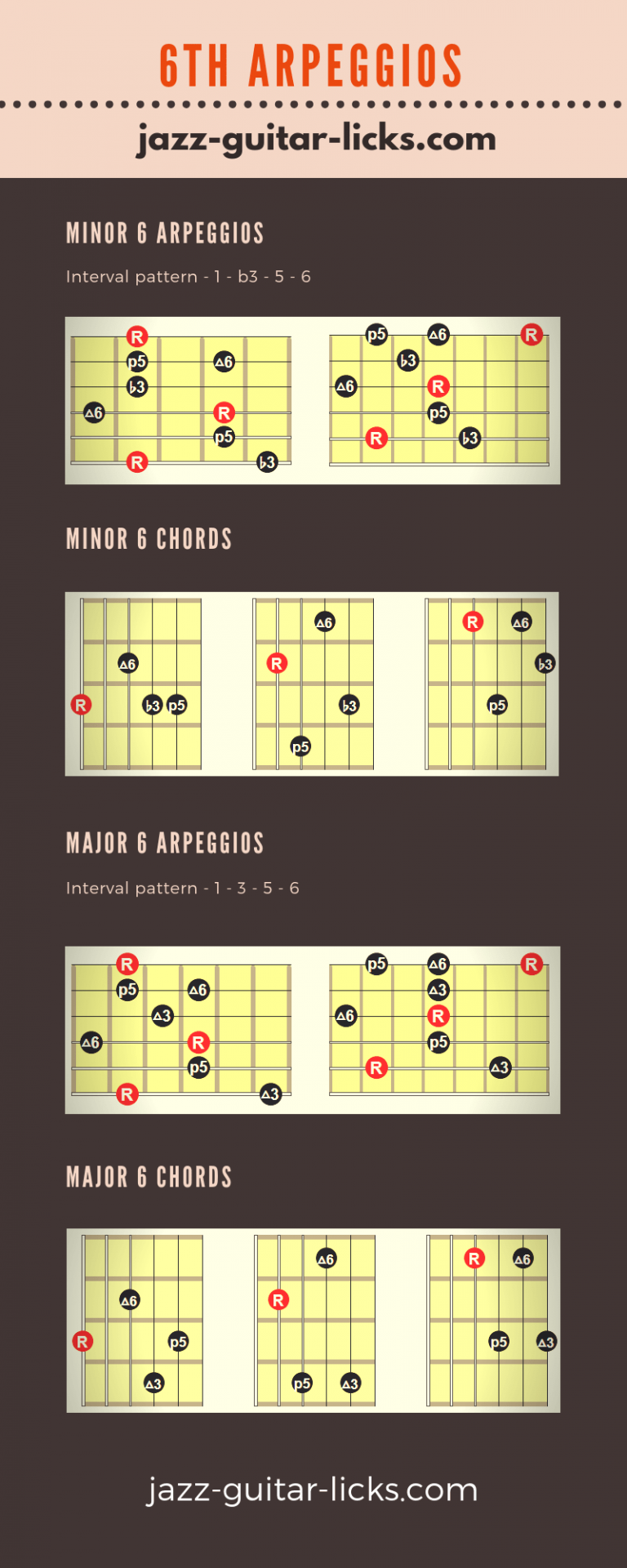
-
Guitar Chord Dictionary
This PDF eBook provides over 550 guitar chord shapes. This is the perfect reference guide to understand how chords are built and how to play them on the guitar neck. -
Guitar Scale Dictionary
This E-book is a printable PDF method including over 700 scale diagrams and formula charts for guitarists. -
Harmonized Scales For Guitar
Complete guitar PDF on harmonized scales: major, minor, harmonic and melodic. Includes chord and arpeggio diagrams, charts and practical tabs. -
172 Arpeggio Shapes For Guitar
This printable PDF is a method dedicated to guitarists of all styles who want to learn build and play the most important types of arpeggios. -
126 Triad Chord Shapes
This handbook for guitar players is intended both for teachers and students. It includes 126 guitar shapes for mastering triads. -
Harmonic Major Scale Chords
this PDF offers diagrams and tabs for guitar to learn the chords of the harmonic major scale. -
Major Scale Harmonization
This package provides a printable PDF with exercises and audio files to learn how to harmonize the major scale with 3 note chords and their extensions. -
30 Minor Arpeggio Licks
This package includes a printable PDF method containing 30 exercises with tabs, staves and audio files for practicing minor arpeggios on guitar. -
II V I Bundle - 170 Exercises
This bundle contains 4 PDF methods for a total of 170 exercises with tabs, staves, analysis & audio files for practicing scales, arpeggios licks & chords over the 2-5-1 progression. -
Diatonic Licks Bundle
This package contains 120 jazz guitar lines based on diatonic modes as Mixolydian, Dorian and Ionian. PDF format with tabs, audio files and analysis. -
30 Groovy Jazz Guitar Licks
This downloadable package contains a PDF WITH audio files giving access to 30 groovy guitar phrases mixing jazz, blues and funky licks for beginners. -
30 Smooth Jazz Guitar Licks
In this package you'll get a printable PDF Method with tabs, notation, analysis, scale shapes and audio files for practicing 30 smooth jazz guitar licks. -
40 II V I Jazz Guitar Licks
This pdf method for guitar contains fourteen 2 5 1 jazz guitar lines with tab, standard notation, analysis, scale charts and audio files. -
50 II-V-I voicings
This printable PDF guitar method provides 50 exercises with audio files, analysis, tab and staves for learning major 2-5-1 chord voicings. -
40 Minor 2 5 1 Chord Voicings
This PDF method contains 40 exercices with tabs, scores and audio files for practicing jazz guitar chords over the minor 2 5 1 progression. -
40 Minor II V I Licks
This guitar method is a printable PDF with tabs, diagrams, theory and audio files providing 40 minor 2 5 1 jazz patterns. -
40 Mixolydian Jazz Guitar Lick
PDF guitar method with tabs, audio files and theory providing 40 dominant jazz guitar lines for teachers and students. -
40 Minor Jazz Guitar Licks
This printable guitar method in PDF format contains 40 easy minor jazz guitar lines based on the Dorian mode. -
40 Major Jazz Guitar Licks
Printable PDF eBook method containing 40 major jazz guitar licks with tab, standard notation and audio files for beginners and intermediates. -
Guitar Walking Bass Lines
This jazz guitar method about walking bass lines and chords is available as a PDF files containing 35 exercises with tabs, analysis and audio files -
101 Dominant Arpeggio Patterns
This printable PDF method provides 101 dominant arpeggio exercises with tab, theory and standard notation for the jazz, blues and rock guitarist. -
49 Essential Jazz Lines
This printable eBook method in PDF format provides 49 jazz solo transcriptions of the greatest jazz musicians. Tab, standard notation, audio files & analysis. -
11 Jazz Blues Studies
11 jazz blues chord studies with tabs, standard notation, analysis, and audio recordings and PDF. -
10 Easy Fingerstyle Blues
This PDF with Tabs and audio files provides 10 easy acoustic fingerstyle blues guitar studies for kids and beginners. -
25 Altered Jazz Guitar Lines
This PDF eBook method contains 25 altered jazz guitar licks with tabs, patterns, scale charts and audio files to master, apply and develop the altered scale. -
40 Blues Dominant Patterns
This printable method is available as a PDF file containing 40 easy dominant jazz-blues guitar lines with tabs, standard notation, analysis, audio files and scale charts. -
25 Pentatonic Licks
This jazz guitar method is an eBook available as a PDF with standard notation, guitar tabs, diagrams, analysis, audio files and backing tracks. You will find in this booklet 25 easy jazz guitar lines with theory using common and rare pentatonic scales. -
25 Soul Jazz Guitar Licks
You will find here an eBook available in PDF containing 25 soul jazz and hard bop guitar licks in the style of Grant Green, Melvin Sparks, George Benson. -
25 Diminished Patterns
This eBook PDF with audio files contains 25 dominant diminished jazz guitar patterns using the half-whole diminished scale and diminished 7th arpeggios. -
6 Tritone substitution licks
This Printable PDF eBook available for free download contains 6 easy jazz guitar licks with tabs/notation, youtube video link and analysis about the tritone substitution. -
10 Minor 7 Arpeggio Patterns
This printable PDF eBook offers 10 easy minor 7 arpeggio patterns with its related YouTube video for beginner guitarists. -
10 Easy Major 7 Arpeggio Licks
This is a printable PDF for beginner jazz guitar players providing 10 easy licks to practice major 7 arpeggios. -
10 Chord Melody Lines
Within this package, you'll discover a set of ten chord melody exercises for beginners. Printable PDFaudio files, a backing track, and a link to the associated YouTube video. -
10 Minor Blues Scale Licks
You'll find here a PDF with 10 easy jazz guitar licks to practice the minor blues scale on guitar.
